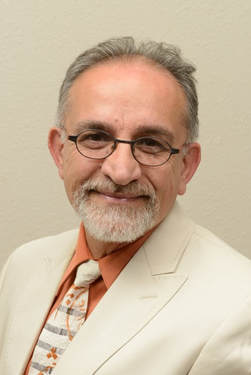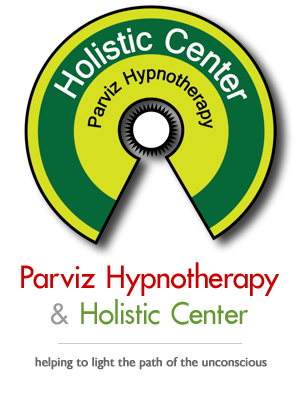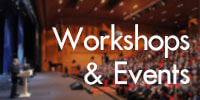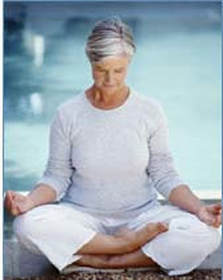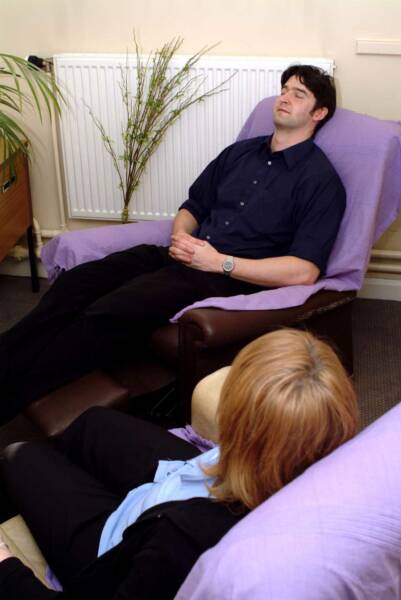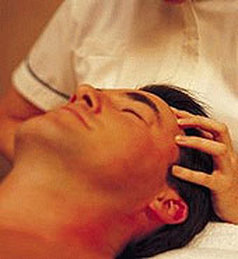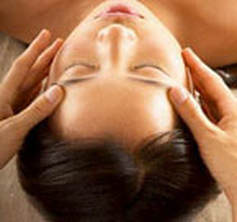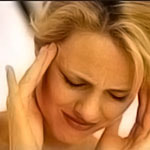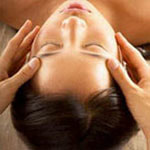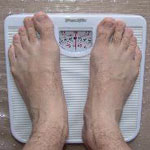|
(707) 655-7540
940 Adams St. Ste. P, Benicia, CA 94510 |
|
Progressive Relaxation
|
Relaxation reduces stress, anxiety, fear of change, and defensiveness, and provides a sense of empowerment to the client. Things can simply seem more manageable. Hypnosis is much, much more than just relaxation, but relaxation is commonly used as a therapeutic stepping-stone for all of these reasons.
The progressive muscle relaxation technique involves offering suggestions of relaxation of the various muscle groups of the body sequentially. There are a number of different relaxation methods available. Some of the most widely taught and practiced include progressive relaxation, cue-controlled relaxation, breathing exercises, guided imagery, and biofeedback. Progressive relaxation is performed by first tensing, and then relaxing, the muscles of the body, one group at a time. Muscle groups can be divided a number of different ways, but a common method is to use the following groupings:
The patient lays or sits in a comfortable position, and then starts with the first muscle group, focusing on the feeling of the muscles and the absence or presence of tension. The patient then tenses the first muscle in the group, holds the tension for approximately five seconds, and releases and relaxes for up to 30 seconds. The contrast allows the individual to notice difference between feelings of tension and feelings of relaxation. The procedure is repeated with the next muscle in the group, and so on, until the first group is completed. The patient then starts on the next muscle group. Progressive relaxation can be guided with verbal cues and scripts, either memorized by the patient or provided on instructional audiotapes. The procedure remains the same, but the individual is prompted on which muscles to flex and relax and given other cues about noticing the difference between the tense and relaxed state. Some individuals may prefer progressive relaxation that is prompted with a tape, because it allows them to completely clear their minds and to just follow the given instructions. Individuals under stress often experience fast, shallow breathing. This type of breathing, known as chest breathing, can lead to shortness of breath, increased muscle tension, and inadequate oxygenation of blood. Breathing exercises can both improve respiratory function and relieve stress and tension. Before starting to learn breathing exercises, individuals should first become aware of their breathing patterns. This can be accomplished by placing one hand on the chest and one hand on the abdomen, and observing which hand moves further during breathing. If it is the hand placed on the chest, then chest breathing is occurring and breathing exercises may be beneficial. Deep breathing exercises are best performed while laying flat on the back, usually on the floor with a mat. The knees are bent, and the body (particularly the mouth, nose, and face) is relaxed. Again, one hand should be placed on the chest and one on the abdomen to monitor breathing technique. The individual takes a series of long, deep breaths through the nose, attempting to raise the abdomen instead of the chest. Air is exhaled through the relaxed mouth. Deep breathing can be continued for up to 20 minutes. After the exercise is complete, the individual checks again for body tension and relaxation. Once deep breathing techniques have been mastered, an individual can use deep breathing at any time or place as a quick method of relieving tension. Like progressive relaxation, release-only relaxation focuses on relieving feelings of tension in the muscles. However, it eliminates the initial use of muscle tensing as practiced in progressive relaxation, focusing instead solely on muscle relaxation. Release-only relaxation is usually recommended as the next step in relaxation therapy after progressive relaxation has been mastered. In release-only relaxation, breathing is used as a relaxation tool. The individual sits in a comfortable chair and begins to focus on his breathing, envisioning tension leaving the body with each exhale. Once even, deep, abdominal breathing is established, the individual begins to focus on releasing tension in each muscle group, until the entire body is completely relaxed. Cue-controlled relaxation is an abbreviated tension-relief technique that combines elements of release-only relaxation and deep breathing exercises. It uses a cue, such as a word or mental image, to trigger immediate feelings of muscle relaxation. The cue must first be associated with relaxation in the individual's mind. This is accomplished by choosing the cue, and then using it in breathing and release-only relaxation exercises repeatedly until the cue starts to automatically trigger feelings of relaxation outside of the treatment sessions. Cues can be as simple as the word "relax," and are frequently used on relaxation audiotapes. They can also be a visual cue, such as a mental image of a white sand Caribbean beach, a flower-filled meadow, or other relaxing images. Guided imagery also uses such visualization exercises to produce feelings of relaxation. Guided imagery is a two-part process. The first component involves reaching a state of deep relaxation through breathing and muscle relaxation techniques. During the relaxation phase, the person closes his eyes and focuses on the slow, in and out of his breathing. Or, he might focus on releasing the feelings of tension from their muscles, starting with the toes and working up to the top of the head. Relaxation tapes often feature soft music or tranquil, natural sounds such as rolling waves and chirping birds in order to promote feelings of relaxation. Once complete relaxation is achieved, the second component of the exercise is the imagery, or visualization, itself. Relaxation imagery involves conjuring up pleasant, relaxing images that rest the mind and body. These may be experiences that have already happened, or new situations. The individual may also use mental rehearsal. Mental rehearsal involves imagining a situation or scenario and its ideal outcome. It can be used to reduce anxiety about an upcoming situation, such as childbirth, surgery, or even a critical event such as an important competition or a job interview. Individuals imagine themselves going through each step of the anxiety-producing event and then successfully completing it. The body is divided into as few or as many specific muscle groups as you wish, depending on how long or short you think the induction process need be. |
Out beyond ideas of right-doing and wrong-doing there is a field.
I'll meet you there. ~Rumi We are not human beings
having a spiritual experience. We are spiritual beings having a human experience. ~Teilhard de Chardin |

